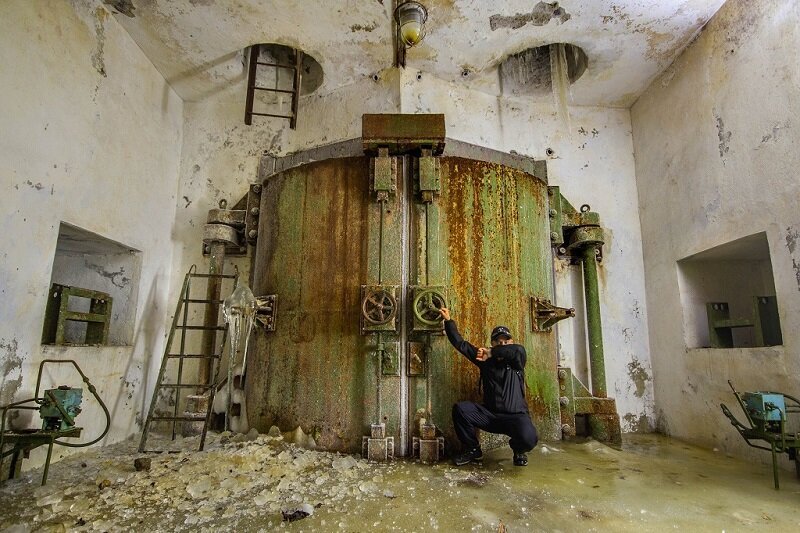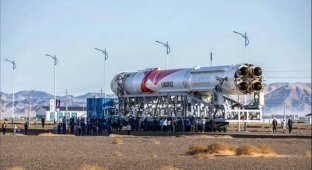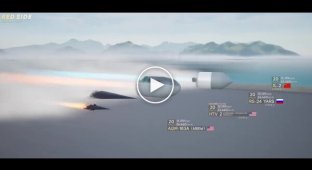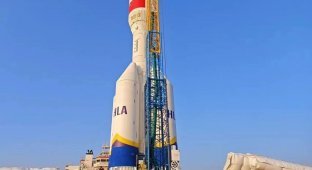Behind these powerful gates was the nuclear arsenal of several missile regiments (40 photos)
Today I will show you a long-abandoned underground storage facility for special (nuclear) warheads for R-16U intercontinental ballistic missiles, built in 1965 not far from the former positions of these missile systems, which were disbanded back in the late 1970s. 
In the 1960s Simultaneously with the deployment of missile regiments of intercontinental ballistic missiles R-16 in the USSR, Nuclear Support Repair and Technical Bases were also formed, where Special Combat Units of missiles, or, more simply put, nuclear warheads for them, were stored in small special RTB storage facilities at combat launch positions at a high degree of readiness .
Typically, products were delivered to such RTBs from the main storage facilities of the huge Central Nuclear Weapons Storage Bases, called “Objects-S”.
But in some very rare cases, when there were no such central storage centers close to the positional areas of the Strategic Missile Forces missile divisions, large separate storage units were built as part of the RTB, acting as the main storage facility for several missile regiments at once, from which the products were already issued to smaller “consumables” RTB storage facilities for assembly teams at missile positions. 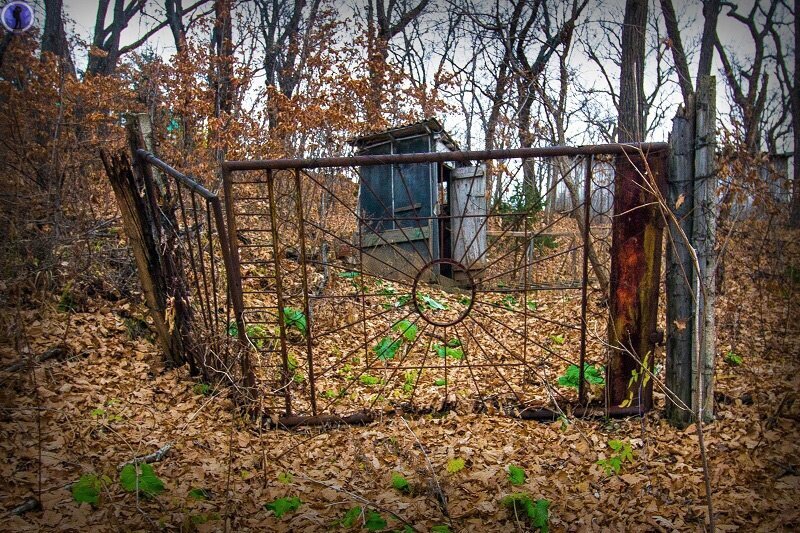
One of these main RTB storage facilities was this one, hidden deep in the forest on an artificial hill not far from the position area of one missile division, which subsequently sunk into oblivion.
The first generation intercontinental ballistic missiles R-16/R-16U very quickly became outdated, because required huge funds for the maintenance of their missile systems of simply monstrous size, and even with low efficiency and a long deployment into combat mode. Therefore, already in 1977 they were withdrawn from service, giving way to the next generation of missiles. And those to the next one, and those also to the next one. It is for this reason that the Strategic Missile Forces are now armed with and are putting into service more and more modern missiles in compact positions, and outdated combat launch positions are becoming unclaimed, because as a rule, for many technical reasons and dimensions, they are simply impossible to adapt to new missiles.
So by the end of the 1970s. The missile regiments supplied from this RTB were disbanded, and the former territory of its military unit with a storage facility was transferred to artillerymen for storing conventional weapons.
But by the end of the 1990s. and they were taken out of here, after which the storage facility was mothballed, and with the final disbandment of the part in the 2000s. resettlement of the town began and by the mid-2010s. it was all abandoned. 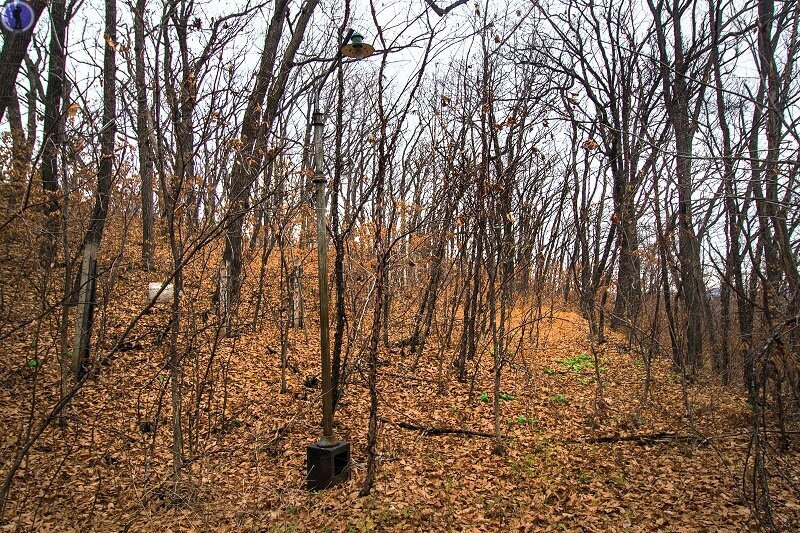
And if the part itself was plundered by looters over the past two and a half decades before the walls were broken, then by our arrival here about ten years ago, nearby in the hill there still remained the storage facility of this base, which had not been cut at the time of the visit. 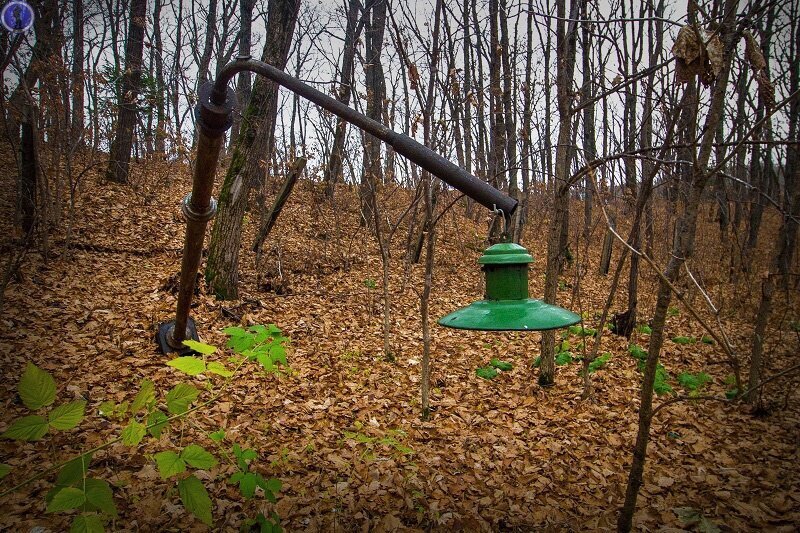
There was once a lantern-lit path for armed guards around the perimeter. Now only rare and almost fallen lampposts in the middle of the forest reminded of her. 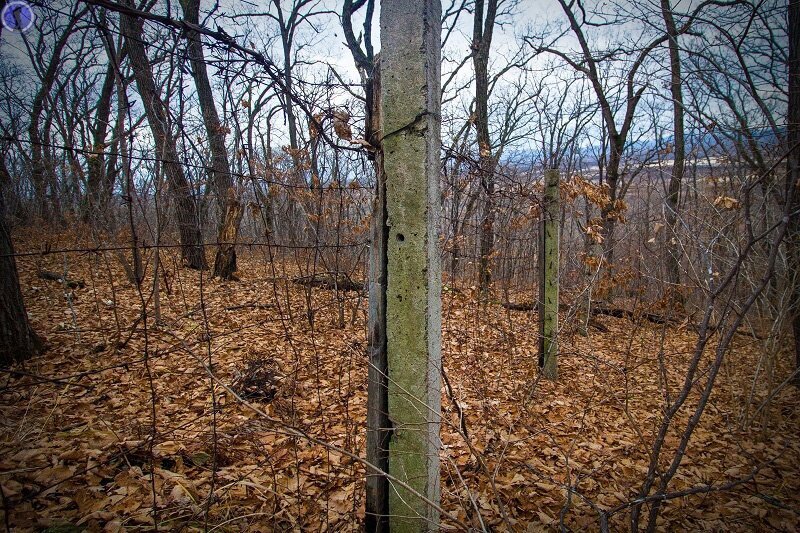
Along the former path, the outer perimeter of the area was still overgrown in places. 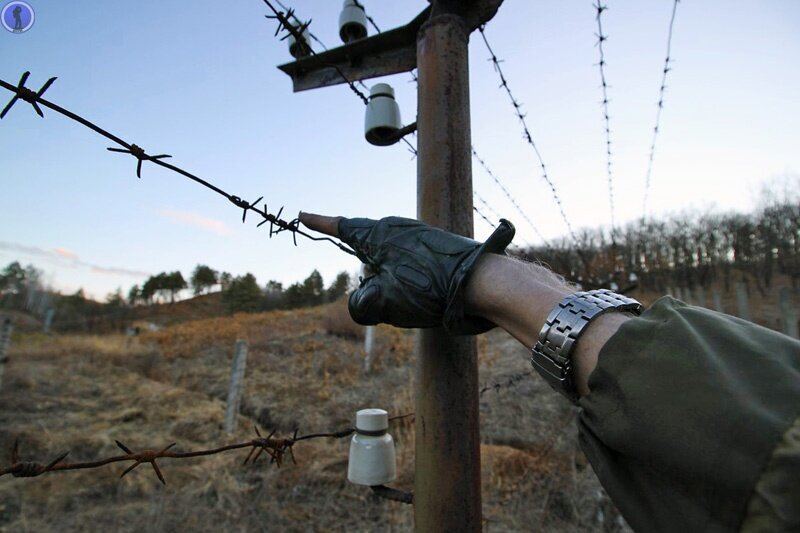
In the center of the territory, surrounded by hills, there was a ring of a triple perimeter around the storage facility itself. The average perimeter during the life of the object was energized and operated in modes from 750 to 3000 volts. 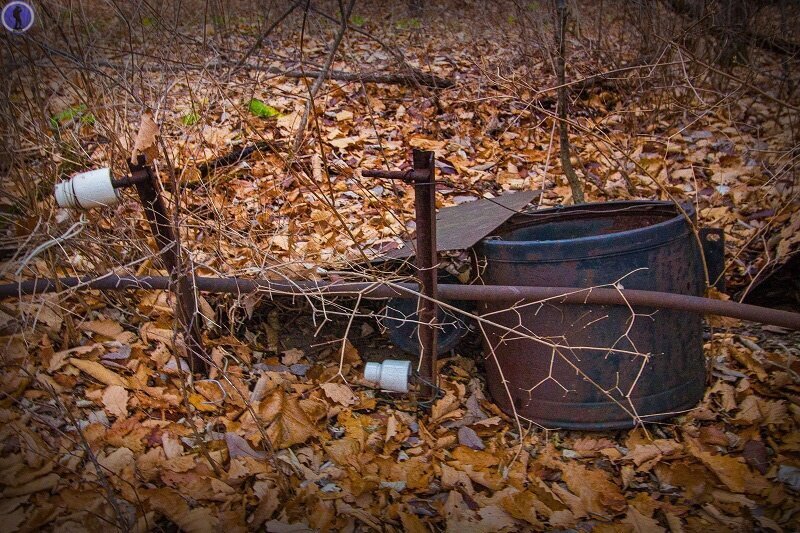
But it was only partially preserved. 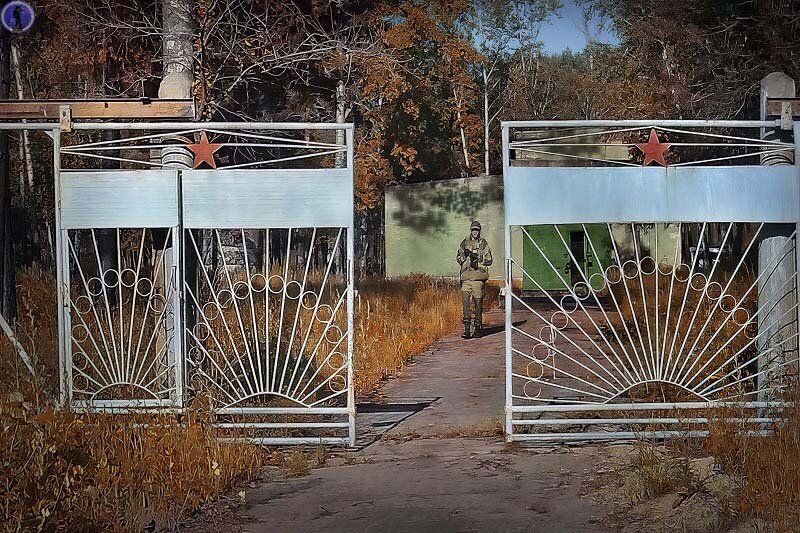
But here one of the three gates installed in a row of the main entrance to the technical territory of the storage facility has been preserved. From the outside they didn’t look rusty yet, but this was a deceptive impression, because... on the other hand, the picture was the opposite. This territory was used until the last, after the unit was disbanded as a warehouse for all sorts of property, and the military left it only in the 2010s.
Immediately behind the gate, you can see the hangar of a camouflage structure that concealed the entrance to an underground facility with a reloading platform and rooms with life support systems. 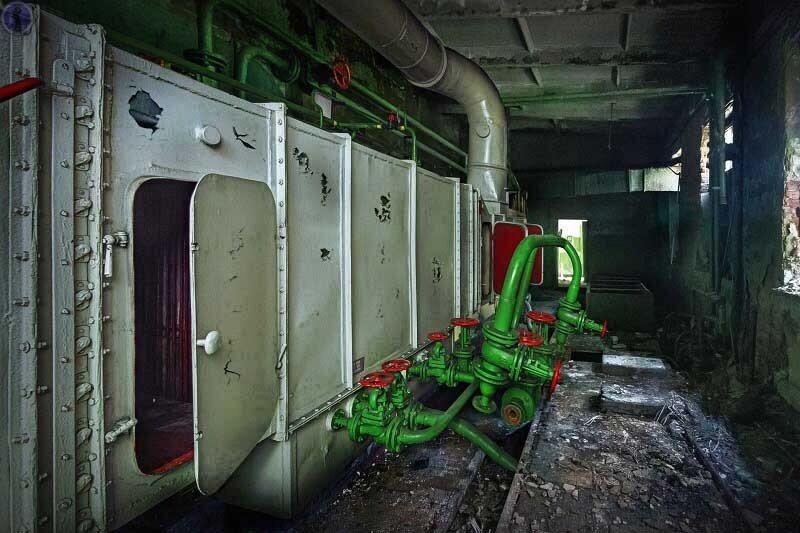
The left part of the ground-based camouflage structure was occupied by rooms with an air conditioning unit and a switchboard, but even then all the motors and pumps had been removed from it, and all the cables had been torn out from the walls and floor. However, the housing of the air conditioning unit itself was still present. 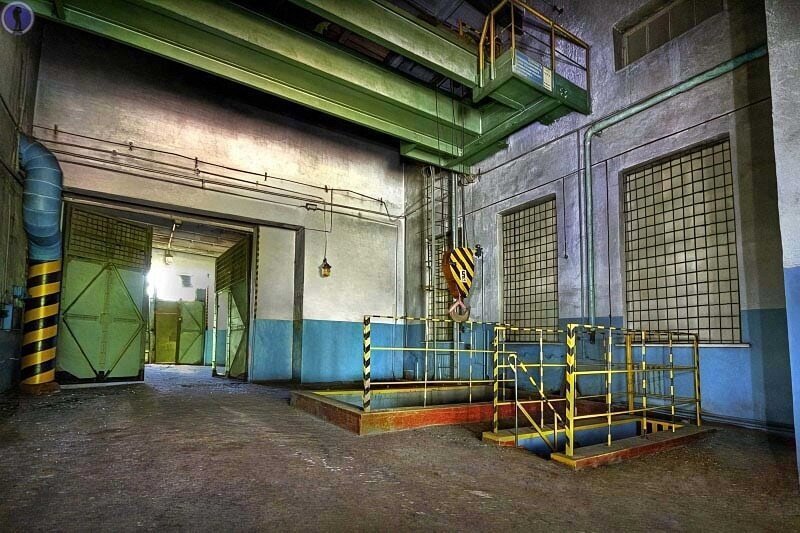
The largest part of the structure was occupied by a loading area with an entrance to the facility and a cargo shaft, above which a powerful crane was mounted. A special storage vehicle drove inside, into which the product was loaded from the shaft using a crane.
Inside, the main hall at that time looked completely untouched and in some places there was even wiring, because the hall itself was used as a warehouse when the dungeon itself had not been used for a long time. 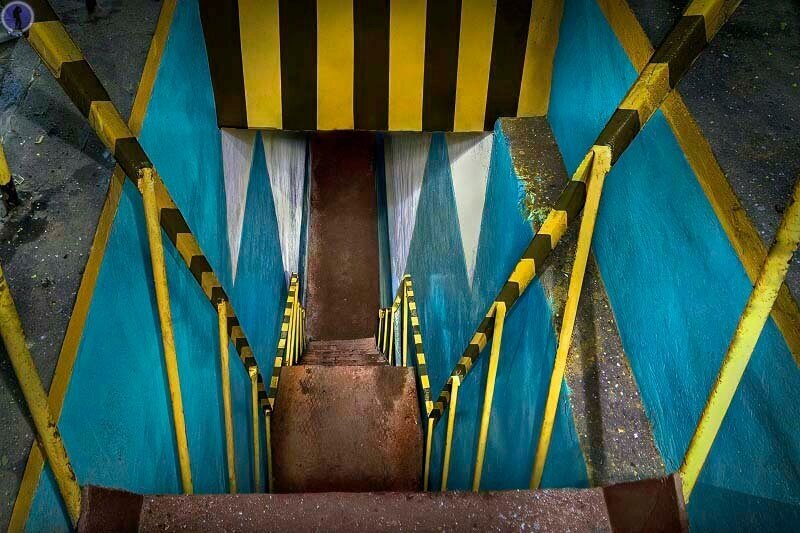
This inclined walkway was used by personnel to descend underground.
By the way, previously only specially trained officers had access there, who reported directly to the 12th Main Directorate of the USSR Ministry of Defense, which dealt with everything related to the storage and delivery of nuclear weapons to the troops. Ordinary conscripts were not allowed into such facilities, with some very rare exceptions, under total supervision. 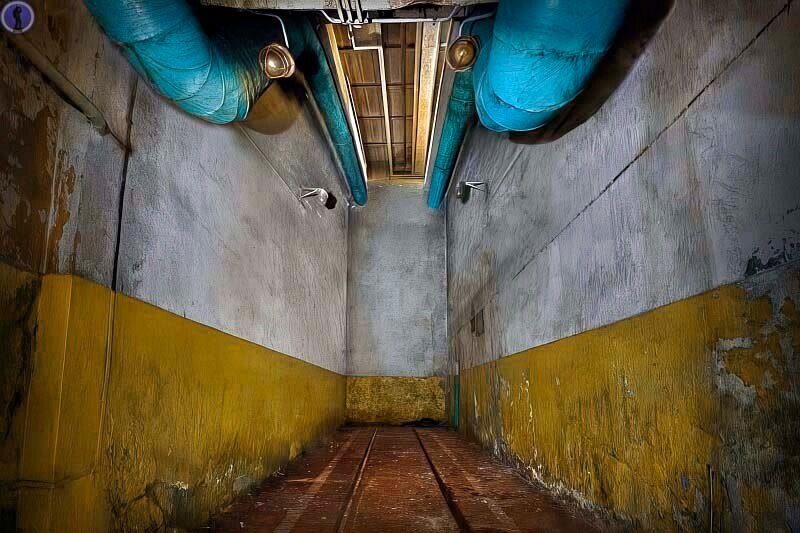
Having gone down the walkway, we find ourselves in a cargo shaft leading to an approach tunnel with narrow-gauge railway rails recessed into the floor, along which products from the storage facility were delivered to the mine on carts. 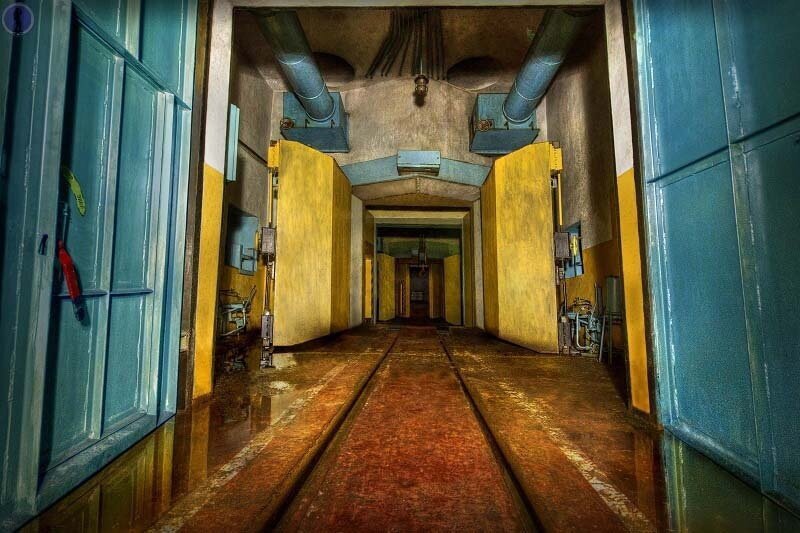
Having walked along the tunnel for about 40 meters, we come out to a row of double-leaf gates of the issuing vestibule-gateway. Here, behind the first light, thin hermetic gates weighing several hundred kg, there was a vestibule-gate with a gate control panel and hydraulic drives, which opened the thick security gates installed next, weighing several tens of tons. We did not photograph them in detail, but below we will show the same ones on another emergency exit.
But that's not all. Behind the multi-ton security gates, another gate was installed next, but this time weighing several tons, and in the left wings of the first and third gates there was also a hermetic door for the passage of people. 
Having passed the airlocks of the issuing gates, we came out into another vestibule with a turning circle, which we also unfortunately did not photograph. From this vestibule one could get into the main storage room and into the maintenance room, where products were collected to a higher degree of readiness before being issued. Here the humidity takes its toll and the condition of the object becomes much worse.
Interestingly, the passage to the maintenance hall was already with ordinary wooden gates covered with metal, and not with hermetic metal ones, but in their left wing there was also a door for the passage of people. 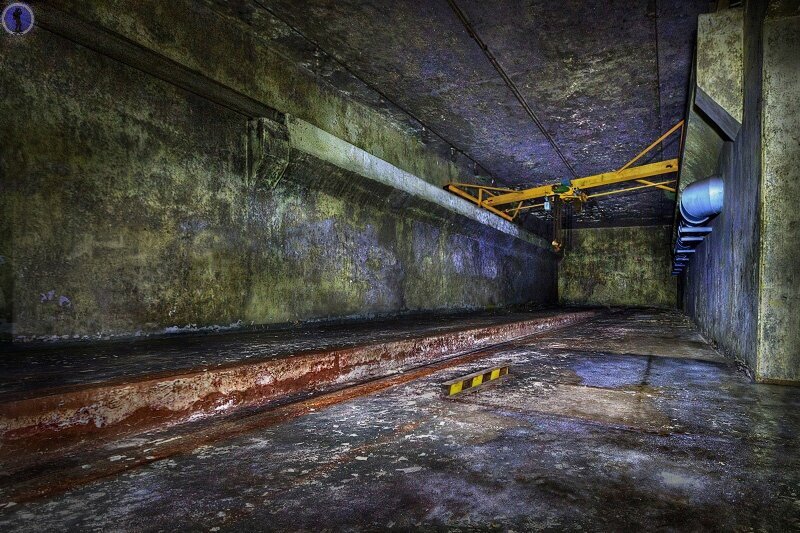
This is what the maintenance room looked like, where a crane beam was mounted under the ceiling for working with products. The condition of the property is getting even worse and the waterproofing has clearly been compromised.
It is not visible from the photo, but previously the entire floor of the two side platforms was lined up into squares with various technical designations.
And for some reason, the rails of the narrow-gauge railway here end in a strange dead end on the platform, and through the workshop itself the narrow-gauge railway ran lower and was in no way connected with the one that led to the vestibule with the turntable. 
Let's go back to the vestibule with the turntable, where the rails from the issuing cargo shaft lead directly to the main storage unit for nuclear warheads, also protected by thick security gates and hermetic gates behind them, which can be seen in the opening in the photo behind the main dispensing vestibule. 
In this room, on the side aprons, the main supply of SBCs for the missiles of several missile regiments was stored.
It can be noted that there was no crane beam in this room, and the products were reloaded without lifting onto special roller platforms with shock absorbers, which, of course, have not been preserved. 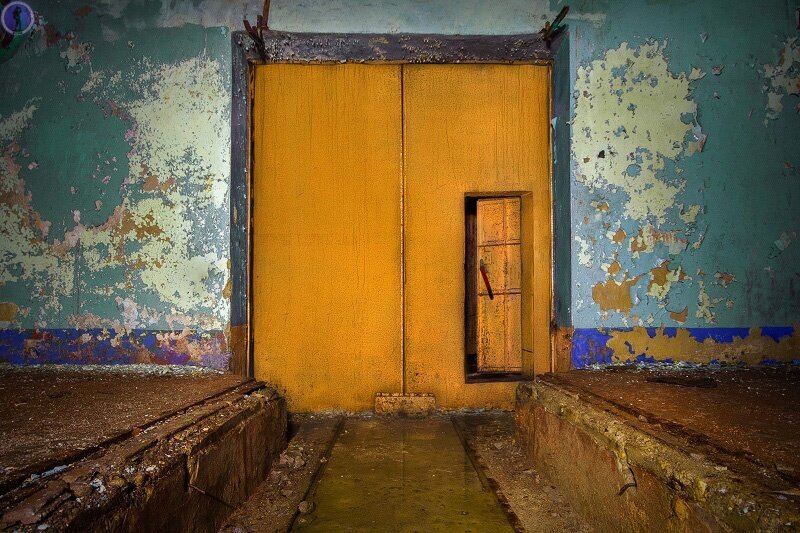
And at the end of the hall, the rails rested on another emergency exit hermetic gate. 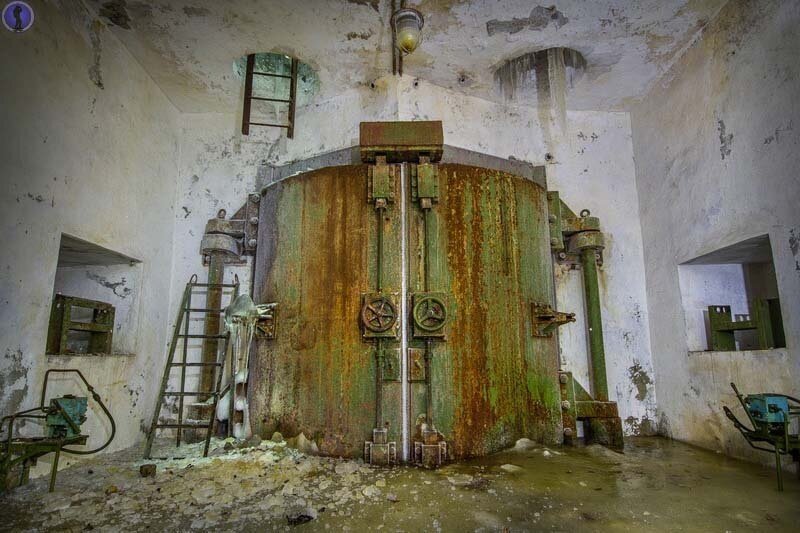
Behind which there is another multi-ton security gate, frozen in the ice, and we will look at it more closely. They are green on the outside because... they were never used for their intended purpose. 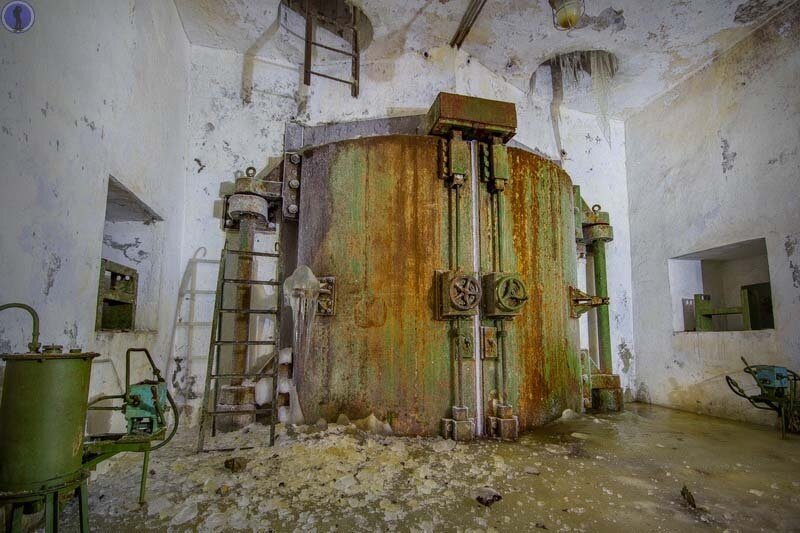
Here, some of the hydraulic systems with drives were completely dismantled. 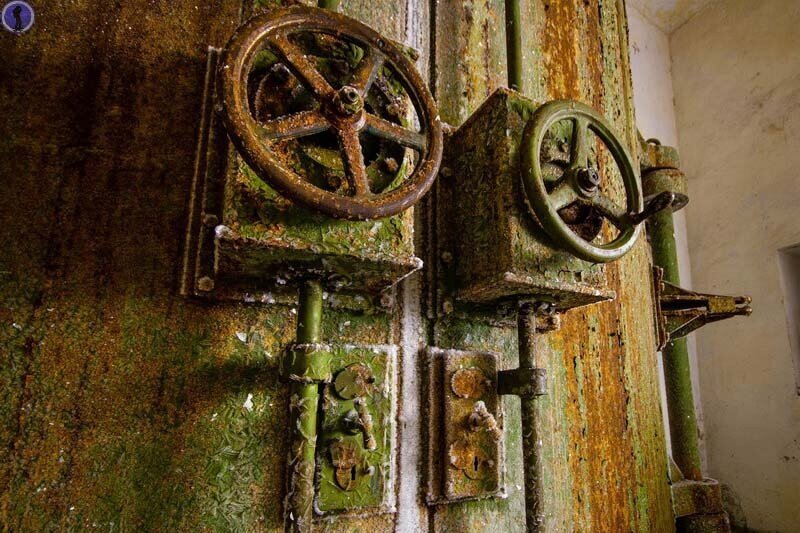
By the way, on such security gates, each steering wheel on the doors was blocked with special locks. 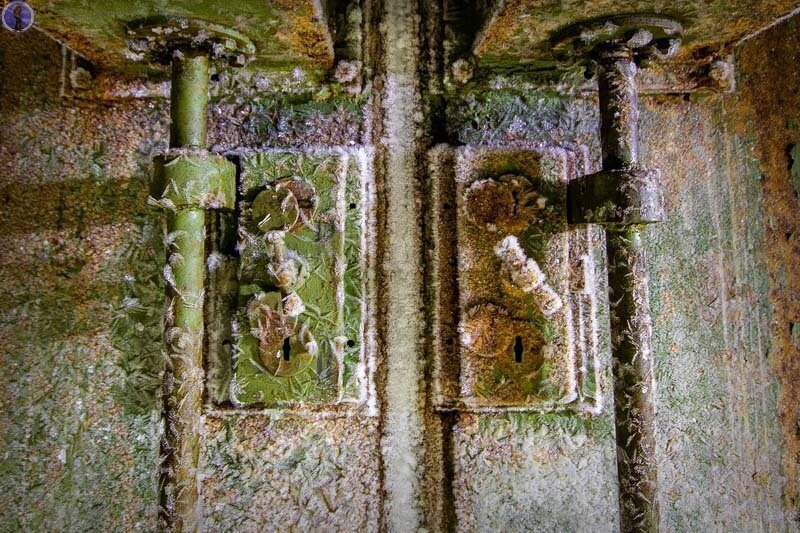
In order to open each of the locks on each leaf, it was necessary to insert two keys and turn them, then turn the locking handle and only after that it was possible to rotate the unlocked steering wheel, which, through a gearbox, released the locks in the floor and ceiling. 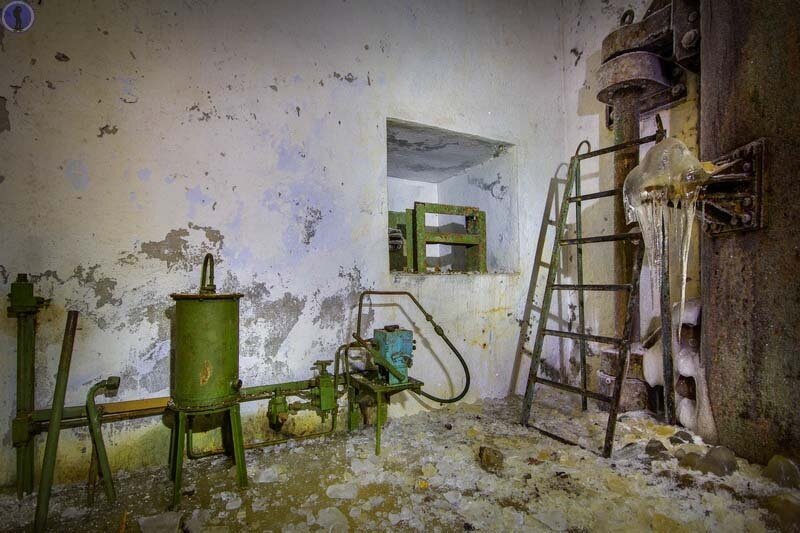
Although the hydraulic drive rods that opened and closed the doors were dismantled, some of the systems still remained in place. 
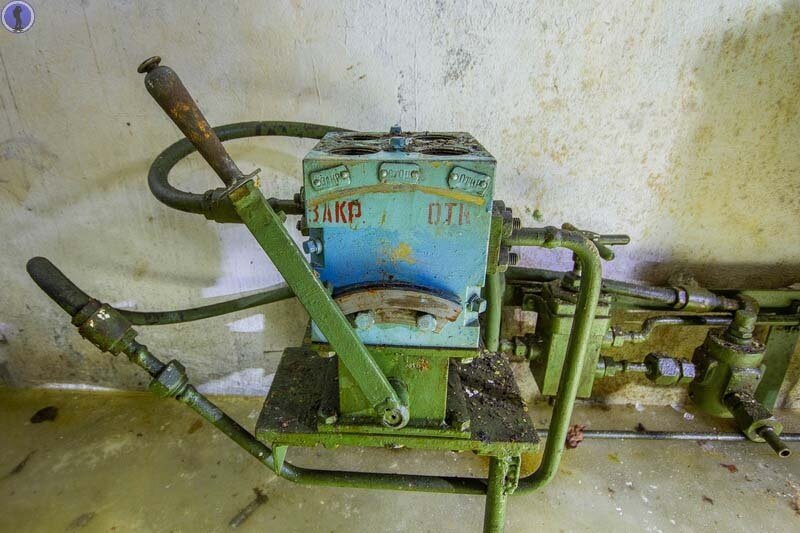
It’s true that they are also subdivided. For example, the cylinders were taken out here. 
Following the vestibule was a passage with such a wooden gate. 
The left wing also had a door for people to pass through. 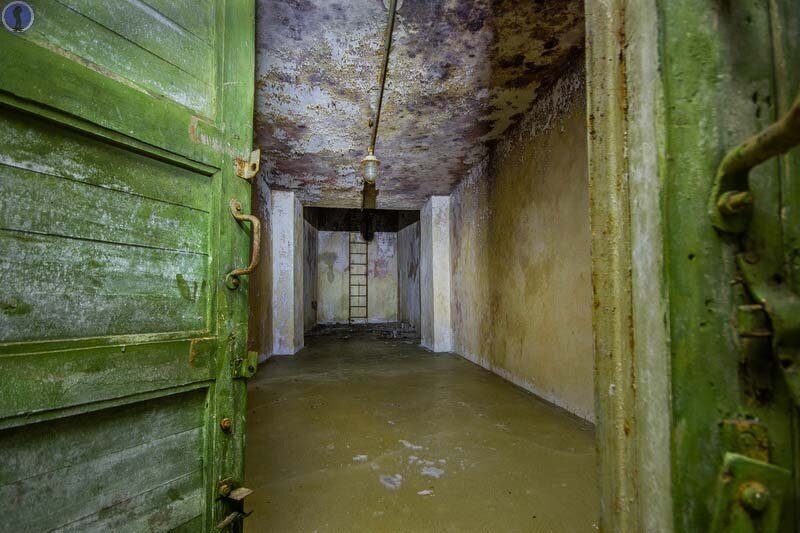
Behind the gate there was another emergency exit tunnel. 
The ice in it does not melt all year round. 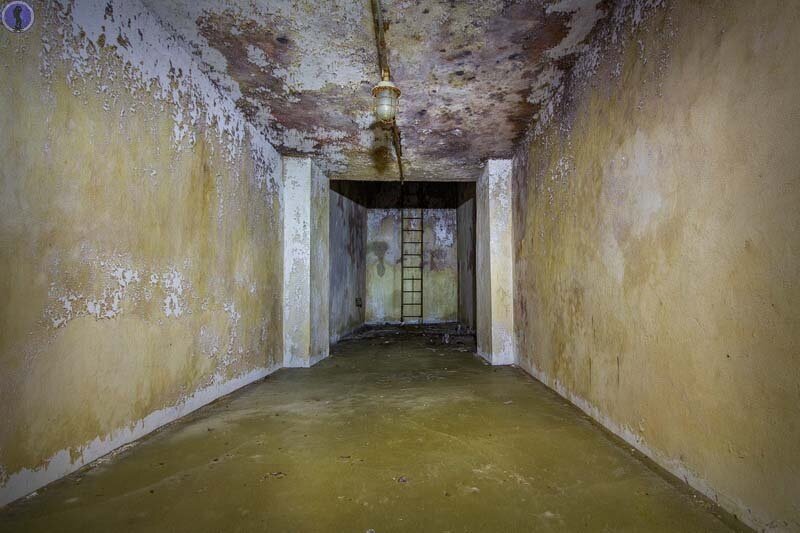
And it led to the second emergency cargo shaft. 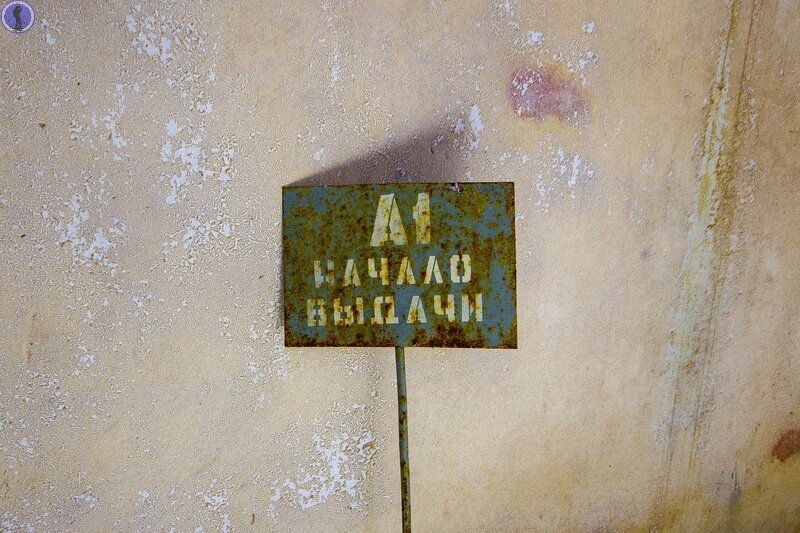
Here we came across several interesting signs left over from the time of storage of nuclear weapons. 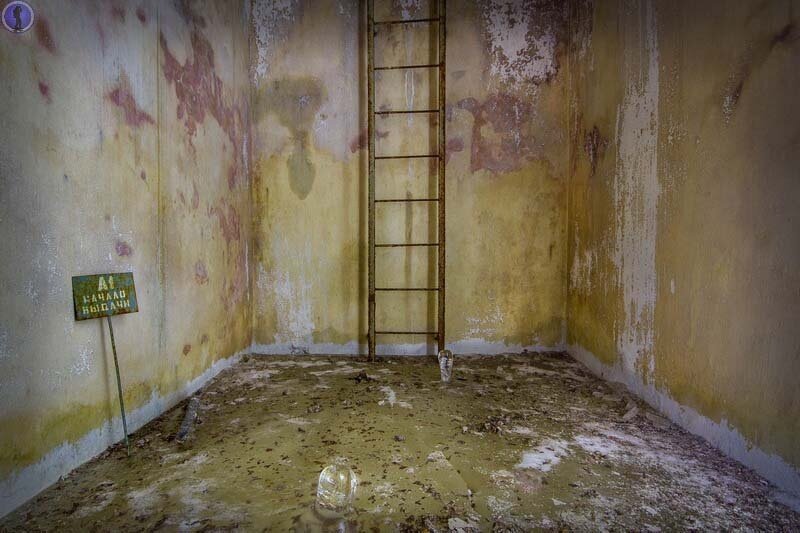
The rails under the ice rested on the stairs. 
Which went up along the shaft and rested on the ceiling, covered with reinforced concrete slabs on top.
This shaft was necessary in case the main entrance of the structure was hit and destroyed. In this case, it was necessary to dig up the slabs and remove them from the head of the emergency exit shaft, after which the emergency release of the UBS would be carried out through this shaft. 
But let's go back to the doors to the vestibule. 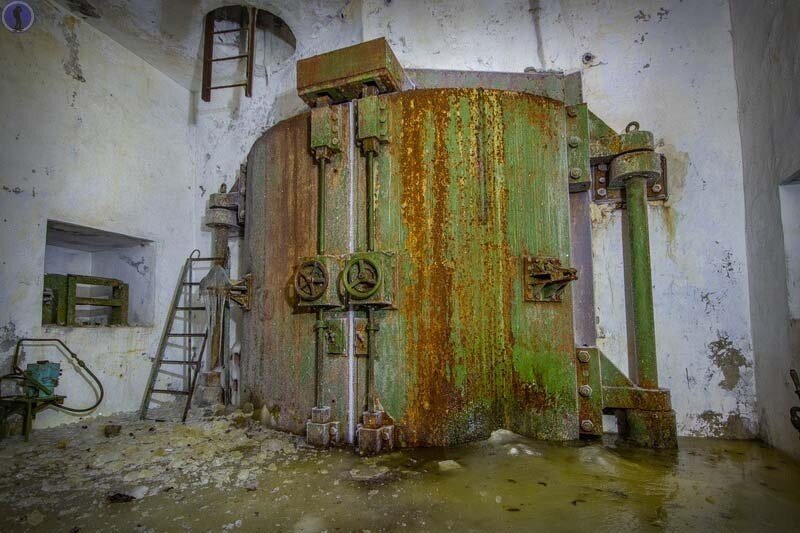
Where above the security gate in the ceiling there was another emergency exit/entrance shaft for people, through which we were able to get behind the closed gate frozen in the ice. 
Through the same shaft, RTB personnel could get into the storage facility in an emergency situation. 
And having made two bends, the shaft came out into a pressurized hatch hidden from view, which once housed one of the guard posts. 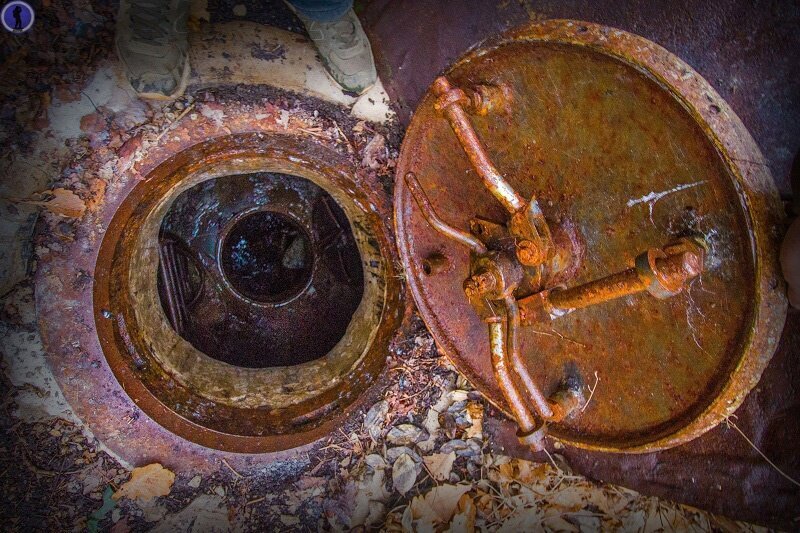
We somehow had a chance to visit such a relatively well-preserved storage facility at that time before it was completely cut up by looters. Now there is no metal left in it, and it itself has long been flooded up to its neck. 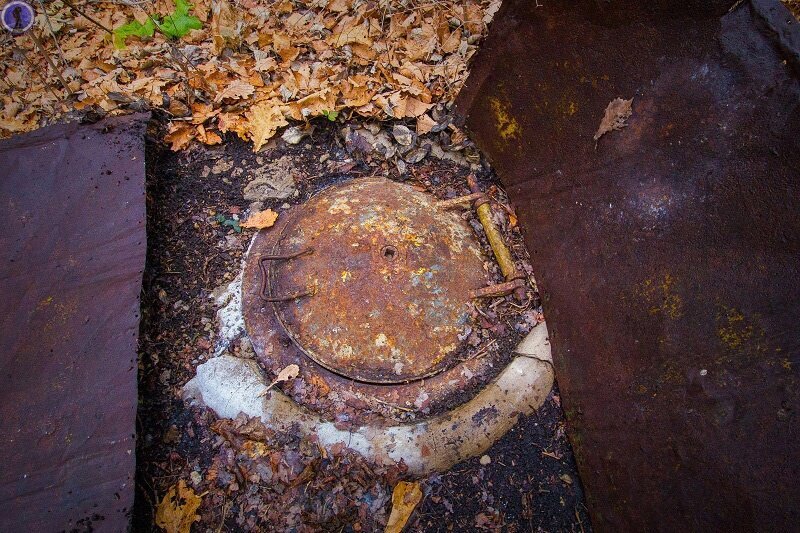
Well, that's all. 